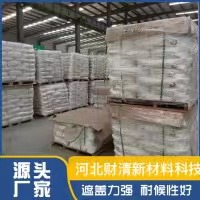
டிசம்பர் . 02, 2024 04:01 Back to list
Exploring Innovative Chemical Solutions for Durable Building Coatings and Enhanced Performance
Chemical Building Coatings Enhancing Protection and Aesthetics
Chemical building coatings play a pivotal role in the construction and maintenance of structures, ensuring both durability and aesthetic appeal. These coatings serve a variety of purposes, ranging from protecting surfaces against environmental factors to providing a decorative finish that enhances the visual appeal of buildings. This article delves into the importance, types, and innovations in the field of chemical building coatings.
The Importance of Chemical Building Coatings
In the realm of architecture and construction, the primary purpose of chemical building coatings is to protect surfaces. Structures are constantly exposed to a barrage of environmental factors, including rain, UV radiation, temperature fluctuations, and pollutants. Without adequate protection, materials such as wood, metal, and concrete can deteriorate quickly, leading to costly repairs and reduced longevity.
Moreover, chemical coatings provide a barrier that can prevent corrosion, particularly in metal structures. Corrosion can significantly compromise the integrity of buildings, especially in coastal areas where salt and moisture are prevalent. For instance, anti-corrosive paints and coatings can extend the lifespan of bridges, railings, and other metal installations.
Types of Chemical Building Coatings
1. Paints and Varnishes The most common form of building coating is paint, which serves both protective and aesthetic functions. Paints are formulated from various chemical compounds and can be designed for specific applications, such as water-based, oil-based, or enamel paints. Varnishes, often clear or semi-transparent, are used to protect wooden surfaces while allowing the natural grain to show through.
2. Sealants and Caulks These are used to fill gaps and cracks, providing a waterproof barrier that prevents moisture from infiltrating the building. Sealants are essential in areas subjected to movement, such as joints and seams, while caulks are typically used in stationary areas.
3. Epoxy Coatings Known for their strength and resistance to chemicals, epoxy coatings are often used in industrial settings or high-traffic areas. They provide an extremely durable surface that can withstand harsh conditions, making them ideal for floors, walls, and even countertops.
chemical building coatings

4. Polyurethane Coatings These coatings are known for their flexibility and UV resistance. They are used for both interior and exterior applications, providing a glossy finish that is resistant to wear and tear, thus making them suitable for surfaces exposed to sunlight.
5. Elastomeric Coatings These coatings are highly elastic and can stretch, making them ideal for use on roofs and surfaces that experience significant movement. They provide a waterproof barrier and can help prevent leaks.
Innovations in Building Coatings
The field of chemical building coatings is evolving, driven by technological advancements and a growing emphasis on sustainability. Innovations include the development of eco-friendly coatings that reduce volatile organic compounds (VOCs) emissions, promoting a healthier environment for both applicators and occupants.
Additionally, smart coatings are emerging, which can respond to environmental stimuli. These can include coatings that change color based on temperature or that can self-clean, reducing maintenance costs and efforts.
Nanotechnology is also playing a significant role in advancing coating performance. Coatings with nanomaterials can enhance water repellency, stain resistance, and durability, providing superior protection without compromising aesthetic qualities.
Conclusion
Chemical building coatings are essential in modern construction, offering a blend of protection and beauty that enhances the longevity and appearance of structures. As technology evolves, so too do the coatings available, with innovations that promise improved performance and sustainability. For builders and architects, understanding the various types of coatings and their applications can lead to better choices that not only meet functional requirements but also contribute to the overall aesthetics of the built environment. Ultimately, these coatings are more than just a protective layer; they are an integral component of enduring architectural design.
-
High Quality China Black Iron Oxide Powder Supplier Competitive Price & Fast Delivery
NewsJul.08,2025
-
High Quality Titanium Dioxide Used in Rubber – Trusted Supplier & Factory Price
NewsJul.08,2025
-
High Purity Barium Sulfate Particle Size - Wholesale Manufacturer from China
NewsJul.07,2025
-
Premium Titanium Dioxide Lomon R-996 Supplier – Quality & Wholesale Price from China
NewsJul.07,2025
-
Top Titanium Manufacturers in China - Quality Titanium Dioxide Supplier & Production Line Solutions
NewsJul.06,2025
-
OEM Titanium White Supplier & Factory – High Purity, Consistent Quality for Industrial Use
NewsJul.06,2025
